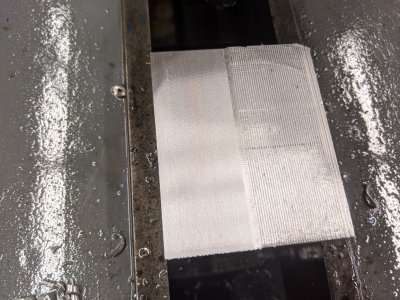- Joined
- Aug 3, 2017
- Messages
- 2,437
So, small victories this morning...
I found (on this site no less!) a US Army manual that is more similar to my machine. In it, I found 3 important pieces of information:
1- Where to hook up a pressure gauge. I don't have the part they plug into, but it shows to do it right next to the pump, where i DO have a plug I could install it. This is where I was going to put it anyway actually!
2- Where the pressure adjustment valve is. It is actually pretty clearly a part that the 'refurbisher' I bought from cleaned/replaced/took apart. I'm guessing at least 1/2 my problem is this adjustment.
3- Most importantly, when and how to bleed the system! Turns out, my symptom is EXACTLY the situation where the system needs bleeding. I think when I pulled the speed control valve apart that I drained enough fluid/introduced air into the system. I got side-tracked by some thermal event in the motor/motor control that lead me down the wrong path.
SO, turns out I wasted my time trying to track down a couple of minor leaks. I think i caused the cross threading above when trying to re-assemble, so I'm going to have that line (plus 1 other that makes reassembly easier) remade in rubber today at NAPA. I have a set of NPT taps coming in tomorrow that should let me clean up the threads on a bunch of parts, so I can reseal and re-assemble everything early in the week!
This time, I'm going to let the sealant cure (I picked up the loctite 567, also coming tomorrow, as suggested above!) before starting the system, then bleeding the system for a while. The procedure is to just let it run un-molested for a few minutes until it purges the air out!
After that, I'll install my pressure gauge, block the travel of the head, and get my pressure built up to spec!
TLDR; I found a manual that showed me I'm an idiot for chasing the small leaks, broke stuff in the process, and caused the problem by letting air into my system.
EDIT: ALSO showed me which thing is the filter! I can pull it easily enough and see what it takes to replace THAT!
I found (on this site no less!) a US Army manual that is more similar to my machine. In it, I found 3 important pieces of information:
1- Where to hook up a pressure gauge. I don't have the part they plug into, but it shows to do it right next to the pump, where i DO have a plug I could install it. This is where I was going to put it anyway actually!
2- Where the pressure adjustment valve is. It is actually pretty clearly a part that the 'refurbisher' I bought from cleaned/replaced/took apart. I'm guessing at least 1/2 my problem is this adjustment.
3- Most importantly, when and how to bleed the system! Turns out, my symptom is EXACTLY the situation where the system needs bleeding. I think when I pulled the speed control valve apart that I drained enough fluid/introduced air into the system. I got side-tracked by some thermal event in the motor/motor control that lead me down the wrong path.
SO, turns out I wasted my time trying to track down a couple of minor leaks. I think i caused the cross threading above when trying to re-assemble, so I'm going to have that line (plus 1 other that makes reassembly easier) remade in rubber today at NAPA. I have a set of NPT taps coming in tomorrow that should let me clean up the threads on a bunch of parts, so I can reseal and re-assemble everything early in the week!
This time, I'm going to let the sealant cure (I picked up the loctite 567, also coming tomorrow, as suggested above!) before starting the system, then bleeding the system for a while. The procedure is to just let it run un-molested for a few minutes until it purges the air out!
After that, I'll install my pressure gauge, block the travel of the head, and get my pressure built up to spec!
TLDR; I found a manual that showed me I'm an idiot for chasing the small leaks, broke stuff in the process, and caused the problem by letting air into my system.
EDIT: ALSO showed me which thing is the filter! I can pull it easily enough and see what it takes to replace THAT!
Last edited:



